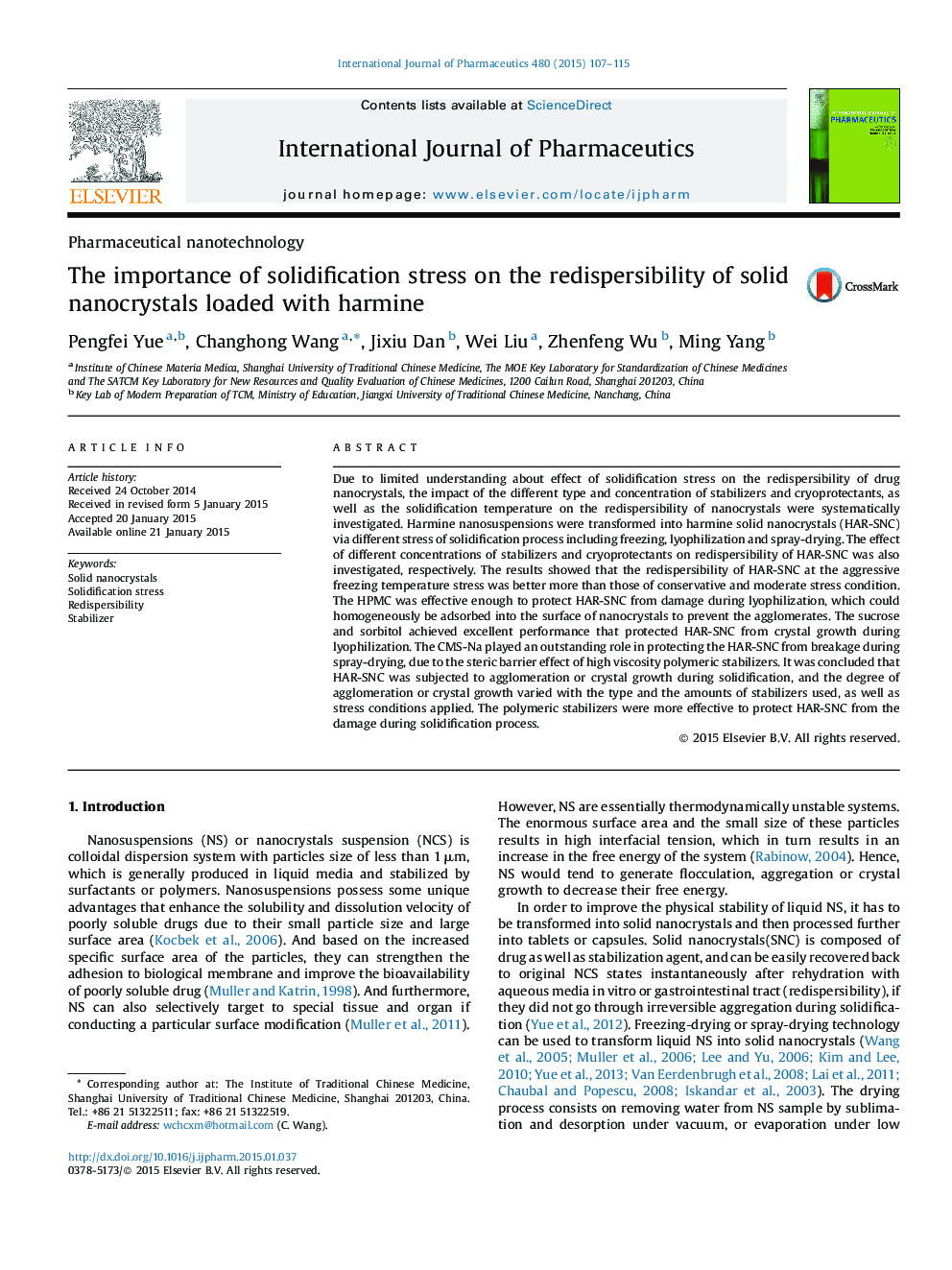| Article ID | Journal | Published Year | Pages | File Type |
|---|---|---|---|---|
| 5819007 | International Journal of Pharmaceutics | 2015 | 9 Pages |
Due to limited understanding about effect of solidification stress on the redispersibility of drug nanocrystals, the impact of the different type and concentration of stabilizers and cryoprotectants, as well as the solidification temperature on the redispersibility of nanocrystals were systematically investigated. Harmine nanosuspensions were transformed into harmine solid nanocrystals (HAR-SNC) via different stress of solidification process including freezing, lyophilization and spray-drying. The effect of different concentrations of stabilizers and cryoprotectants on redispersibility of HAR-SNC was also investigated, respectively. The results showed that the redispersibility of HAR-SNC at the aggressive freezing temperature stress was better more than those of conservative and moderate stress condition. The HPMC was effective enough to protect HAR-SNC from damage during lyophilization, which could homogeneously be adsorbed into the surface of nanocrystals to prevent the agglomerates. The sucrose and sorbitol achieved excellent performance that protected HAR-SNC from crystal growth during lyophilization. The CMS-Na played an outstanding role in protecting the HAR-SNC from breakage during spray-drying, due to the steric barrier effect of high viscosity polymeric stabilizers. It was concluded that HAR-SNC was subjected to agglomeration or crystal growth during solidification, and the degree of agglomeration or crystal growth varied with the type and the amounts of stabilizers used, as well as stress conditions applied. The polymeric stabilizers were more effective to protect HAR-SNC from the damage during solidification process.
Graphical abstractDownload high-res image (148KB)Download full-size image
